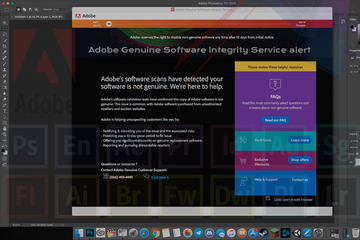- What is Adobe Genuine Software Integrity Service?
- A fix that may or may not work
- Malware-related undercurrents to keep in mind
- Adobe Genuine Software Integrity Service pop-up virus manual removal for Mac
- Get rid of Adobe Genuine Software Integrity Service virus in web browser on Mac
- Get rid of Adobe Genuine Software Integrity Service pop-up virus using Combo Cleaner removal tool
This article provides workarounds for the Adobe Genuine Software Integrity Service pop-up problem on a Mac and explains why it can be a malware symptom.
Update:
What is Adobe Genuine Software Integrity Service?
There are cracked copies of popular software galore across the web. Despite all the ethical caveats and intellectual property-related pitfalls, many people don’t mind opting for these services to install various applications for personal use. Some publishers turn a blind eye to this foul play, given its huge scope and limited traceability. Adobe isn’t on the same page with them and doesn’t appear to be willing to go with the flow. The company even has a separate tool to combat such abuse. It’s called Adobe Genuine Software Integrity Service. When a Mac user installs a pirated version of their desktop product, such as the Photoshop or Acrobat suite, the above-mentioned utility may also crop up inside the system and identify the attempt to game the licensing principles. In this scenario, the user’s experience will be swamped by annoying Adobe Genuine Software Integrity Service pop-up alerts.
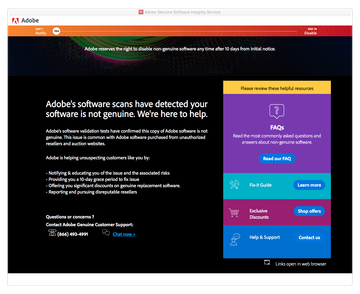
The recurrent warnings may say, “Adobe’s software scans have detected your software is not genuine” or include a less wordy message such as “The Adobe software you are using is not genuine”. The pop-up further explains that the issue is common with products “purchased from unauthorized resellers and auction websites”. The scariest part is that, according to the notification, the software maker reserves the right to disable the unregistered program after 10 days from the initial. It doesn’t take a genius to understand what this means to the average freebie lover: they either have to stop using the application or purchase the license, which is fairly pricey. On a separate note, the publisher’s strategy is additionally fueled by another variant of the notification called the Adobe Genuine Service Alert. This spin-off originates from a utility known as Adobe Genuine Service, which can be found under Utilities on your Mac.
Adobe Genuine Software Integrity Service pop-up virus may re-infect your Mac multiple times unless you delete all of its fragments, including hidden ones. Therefore, it is recommended to download Combo Cleaner and scan your system for these stubborn files. This way, you may reduce the cleanup time from hours to minutes.
Download Now Learn how Combo Cleaner works. If the utility spots malicious code, you will need to buy a license to get rid of it.A fix that may or may not work
In fact, there is one more option those affected can try. It comes down to rooting out the source of these alerts, that is to say, a background service that keeps tabs on the authenticity of the software in question. It resides within a folder named AdobeGCClient. To complete the procedure, expand the “Go” menu in your Mac’s menu bar, select “Go to Folder”, enter “~/Library/Application Support”, and click the “Go” button. Once the Application Support directory is opened, double-click the Adobe entry and move the AdobeGCClient folder to the Trash.
In addition to this, try to identify all the related processes in the Activity Monitor app and terminate them. Some users try to install a firewall app and configure it to block all connections linked with Adobe. Be advised, though, that these efforts often end up futile or only provide a temporary relief from the obnoxious alerts. Even worse, the methods may completely disrupt the functioning of the app. Therefore, you can take this route at your own risk, but think twice before you do.
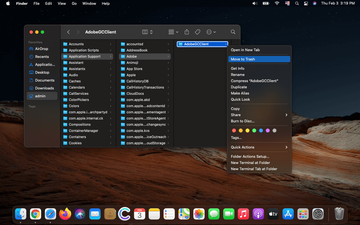
Malware-related undercurrents to keep in mind
Those who stay current with the Mac threat landscape know that mimicking trusted Adobe products is a common trick in cybercrooks’ repertoire. The likely reason is that most users have at the very least heard about those apps or perhaps used them at some point. An example of a malware distribution plot that parasitizes the reputation of the software giant is the fake Flash Player update campaign. Although this solution has been officially deprecated for more than a year, numerous junk websites are still pushing its knock-off updates at the time of this writing. If a Mac user gets on the hook and installs the rogue package, they unwittingly give adware the green light to trespass on their system.
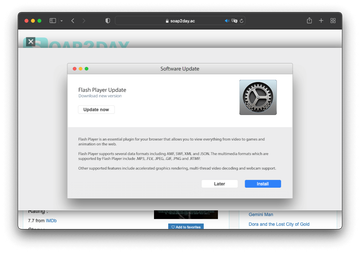
In many cases, the dubious setup client actually installs a trojanized sample of the Flash Player. This won’t fly under the radar of the Adobe Genuine Software Integrity Service, which will alert the user to the presence of a risky modified program version on their Mac. The takeaway from such a situation is that the use of pirated applications is the only possible cause for the emergence of these pop-up warnings. There might be extra implications relating to security rather than the reluctance to play by the rules.
If malware is to blame, the computer may start acting up in several more ways. The fake update bundle usually promotes browser-focused threats, such as search hijackers and ad-injecting nasties. The Bing redirect virus is a prime example of shady code that relies on this scheme to make the rounds. To top it all off, the pop-up itself may be bogus and play a role in a clickbait stratagem aiming to get elevated privileges or install more malware behind the victim’s back. With that said, if you are encountering software authenticity alerts from Adobe, strange browser behavior, or both, consider using the tips below to check your Mac for malicious activity.
Adobe Genuine Software Integrity Service pop-up virus manual removal for Mac
The steps listed below will walk you through the removal of this malicious application. Be sure to follow the instructions in the specified order.
Expand the Go menu in your Mac’s Finder bar and select Utilities as shown below.
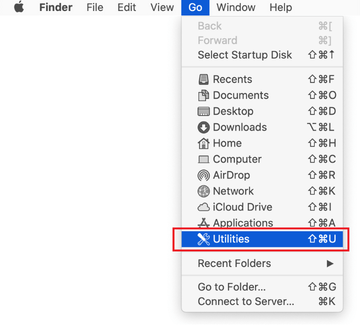
Locate the Activity Monitor icon on the Utilities screen and double-click on it.
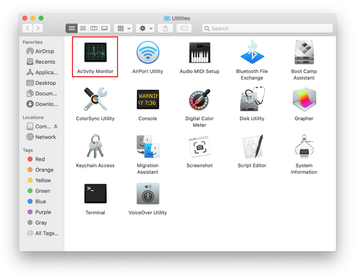
In the Activity Monitor app, look for a process that appears suspicious. To narrow down your search, focus on unfamiliar resource-intensive entries on the list. Keep in mind that its name isn’t necessarily related to the way the threat is manifesting itself, so you’ll need to trust your own judgement. If you pinpoint the culprit, select it and click on the Stop icon in the upper left-hand corner of the screen.
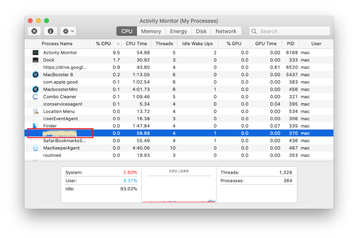
When a follow-up dialog pops up asking if you are sure you want to quit the troublemaking process, select the Force Quit option.
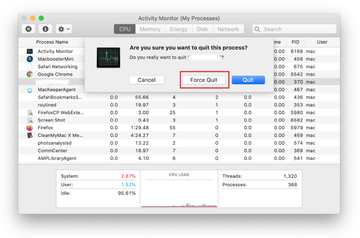
Click on the Go menu icon in the Finder again and select Go to Folder. You can as well use the Command-Shift-G keyboard shortcut.
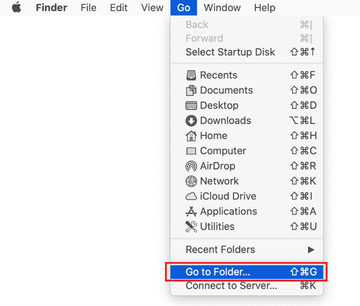
Type /Library/LaunchAgents in the folder search dialog and click on the Go button.
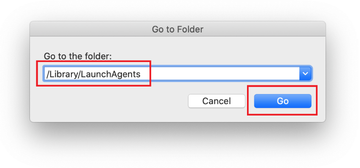
Examine the contents of the LaunchAgents folder for dubious-looking items. Be advised that the names of files spawned by malware may give no clear clues that they are malicious, so you should look for recently added entities that appear to deviate from the norm.
As an illustration, here are several examples of LaunchAgents related to mainstream Mac infections: com.updater.mcy.plist, com.avickUpd.plist, and com.msp.agent.plist. If you spot files that don’t belong on the list, go ahead and drag them to the Trash.
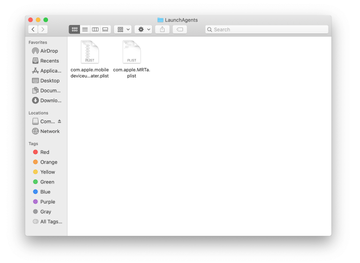
Use the Go to Folder lookup feature again to navigate to the folder named ~/Library/Application Support (note the tilde symbol prepended to the path).

When the Application Support directory is opened, identify recently generated suspicious folders in it and send them to the Trash. A quick tip is to look for items whose names have nothing to do with Apple products or apps you knowingly installed. A few examples of known-malicious folder names are com.AuraSearchDaemon, ProgressSite, and IdeaShared.
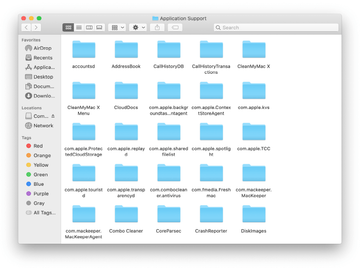
Enter ~/Library/LaunchAgents string (don’t forget to include the tilde character) in the Go to Folder search area.
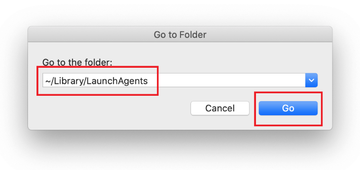
The system will display LaunchAgents residing in the current user’s Home directory. Look for dodgy items related to the Adobe Genuine Software Integrity Service pop-up virus (see logic highlighted in subsections above) and drag the suspects to the Trash.
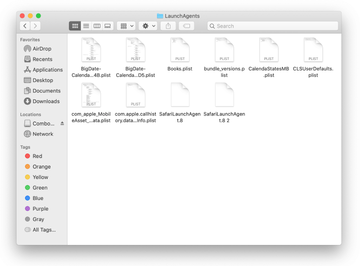
Type /Library/LaunchDaemons in the Go to Folder search field.
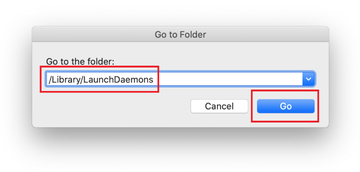
In the LaunchDaemons path, try to pinpoint the files the malware is using for persistence. Several examples of such items cropped by Mac infections are com.pplauncher.plist, com.startup.plist, and com.ExpertModuleSearchDaemon.plist. Delete the sketchy files immediately.
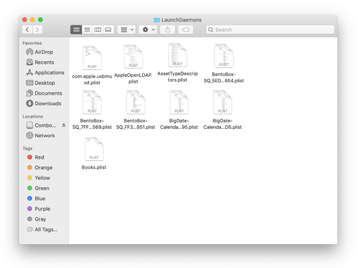
Click on the Go menu icon in your Mac’s Finder and select Applications on the list.
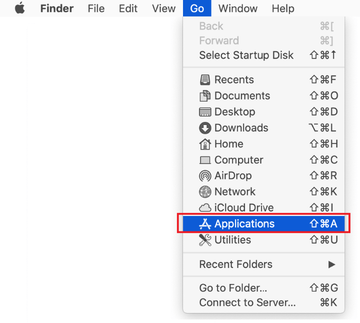
Find the app that clearly doesn’t belong there and move it to the Trash. If this action requires your admin password for confirmation, go ahead and enter it.

Expand the Apple menu and select System Preferences.
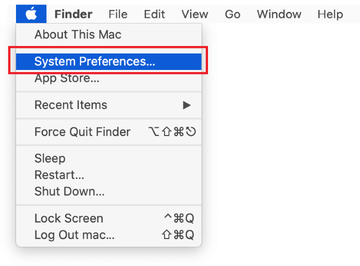
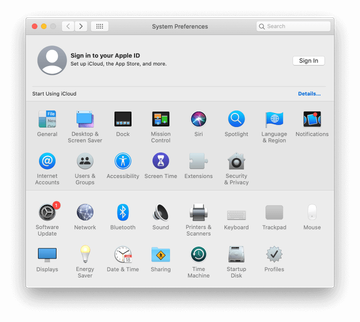
Proceed to Users & Groups and click on the Login Items tab.
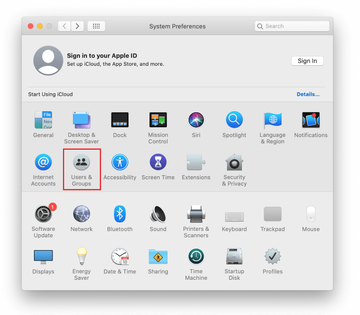
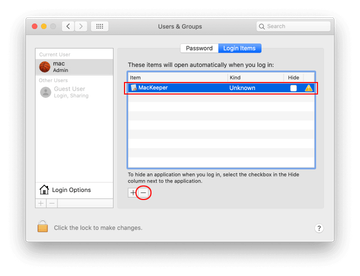
Now select Profiles under System Preferences. Look for a malicious item in the left-hand sidebar. Several examples of configuration profiles created by Mac adware include TechSignalSearch, MainSearchPlatform, AdminPrefs, and Safari Preferences. Select the offending entity and click on the minus sign at the bottom to eliminate it.
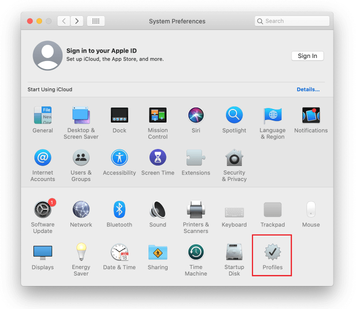
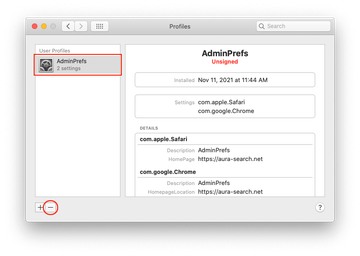
Get rid of Adobe Genuine Software Integrity Service virus in web browser on Mac
To begin with, the web browser settings taken over by the Adobe Genuine Software Integrity Service virus should be restored to their default values. Although this will clear most of your customizations, web surfing history, and all temporary data stored by websites, the malicious interference should be terminated likewise. The overview of the steps for completing this procedure is as follows:
- Remove Adobe Genuine Software Integrity Service virus from Safari
Open the browser and go to Safari menu. Select Preferences in the drop-down list.
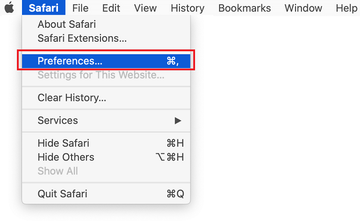
Once the Preferences screen appears, click on the Advanced tab and enable the option saying “Show Develop menu in menu bar”.
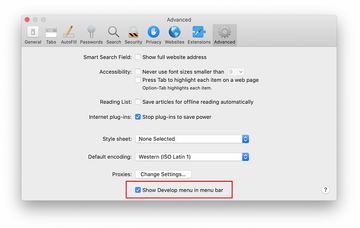
Now that the Develop entry has been added to the Safari menu, expand it and click on Empty Caches.
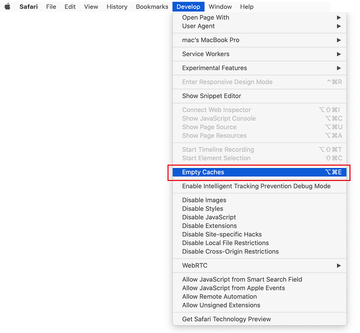
Now select History in the Safari menu and click on Clear History in the drop-down list.
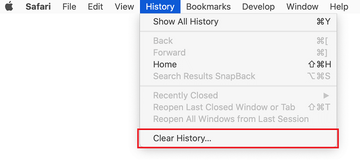
Safari will display a dialog asking you to specify the period of time this action will apply to. Select all history to ensure a maximum effect. Click on the Clear History button to confirm and exit.

Go back to the Safari Preferences and hit the Privacy tab at the top. Find the option that says Manage Website Data and click on it.

The browser will display a follow-up screen listing the websites that have stored data about your Internet activities. This dialog additionally includes a brief description of what the removal does: you may be logged out of some services and encounter other changes of website behavior after the procedure. If you’re okay with that, go ahead and click on the Remove All button.
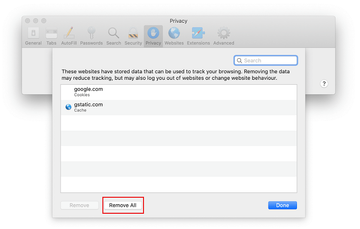
Restart Safari
- Remove Adobe Genuine Software Integrity Service in Google Chrome
Open Chrome, click the Customize and control Google Chrome (⁝) icon in the top right-hand part of the window, and select Settings in the drop-down
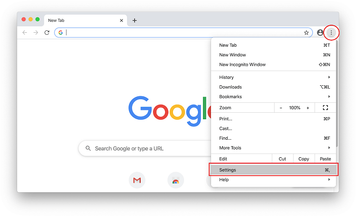
When on the Settings pane, select Advanced
Scroll down to the Reset settings section.
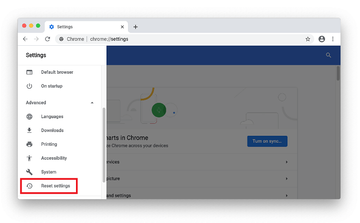
Confirm the Chrome reset on a dialog that will pop up. When the procedure is completed, relaunch the browser and check it for malware activity.
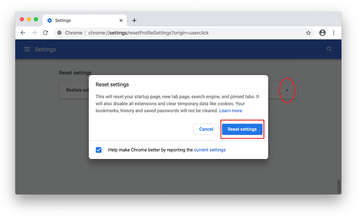
- Remove Adobe Genuine Software Integrity Service from Mozilla Firefox
Open Firefox and go to Help – Troubleshooting Information (or type about:support in the URL bar and press Enter).
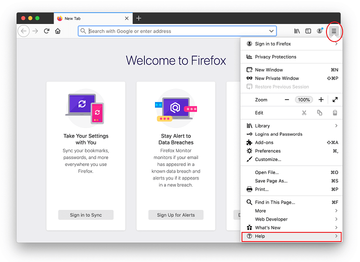
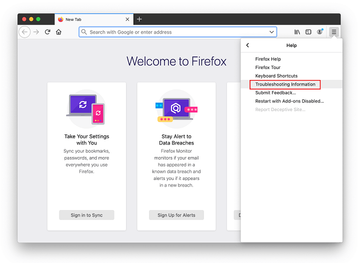
When on the Troubleshooting Information screen, click on the Refresh Firefox button.
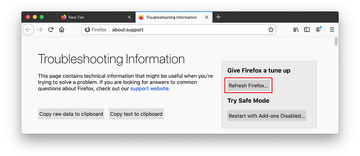
Confirm the intended changes and restart Firefox.
Get rid of Adobe Genuine Software Integrity Service pop-up virus using Combo Cleaner removal tool
The Mac maintenance and security app called Combo Cleaner is a one-stop tool to detect and remove Adobe Genuine Software Integrity Service virus. This technique has substantial benefits over manual cleanup, because the utility gets hourly virus definition updates and can accurately spot even the newest Mac infections.
Furthermore, the automatic solution will find the core files of the malware deep down the system structure, which might otherwise be a challenge to locate. Here’s a walkthrough to sort out the Adobe Genuine Software Integrity Service issue using Combo Cleaner:
Download Combo Cleaner installer. When done, double-click the combocleaner.dmg file and follow the prompts to install the tool onto your Mac.
By downloading any applications recommended on this website you agree to our Terms and Conditions and Privacy Policy. The free scanner checks whether your Mac is infected. To get rid of malware, you need to purchase the Premium version of Combo Cleaner.
Open the app from your Launchpad and let it run an update of the malware signature database to make sure it can identify the latest threats.
Click the Start Combo Scan button to check your Mac for malicious activity as well as performance issues.
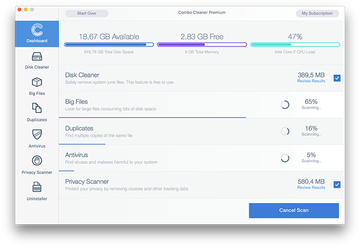
Examine the scan results. If the report says “No Threats”, then you are on the right track with the manual cleaning and can safely proceed to tidy up the web browser that may continue to act up due to the after-effects of the malware attack (see instructions above).
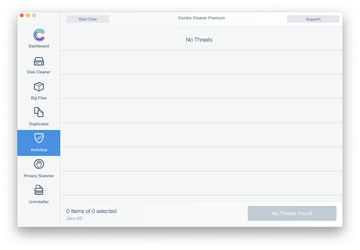
In case Combo Cleaner has detected malicious code, click the Remove Selected Items button and have the utility remove Adobe Genuine Software Integrity Service threat along with any other viruses, PUPs (potentially unwanted programs), or junk files that don’t belong on your Mac.
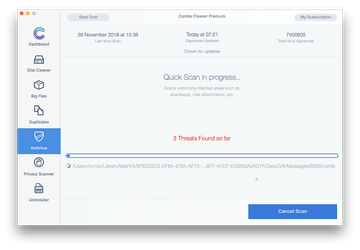
Once you have made doubly sure that the malicious app is uninstalled, the browser-level troubleshooting might still be on your to-do list. If your preferred browser is affected, resort to the previous section of this tutorial to revert to hassle-free web surfing.
